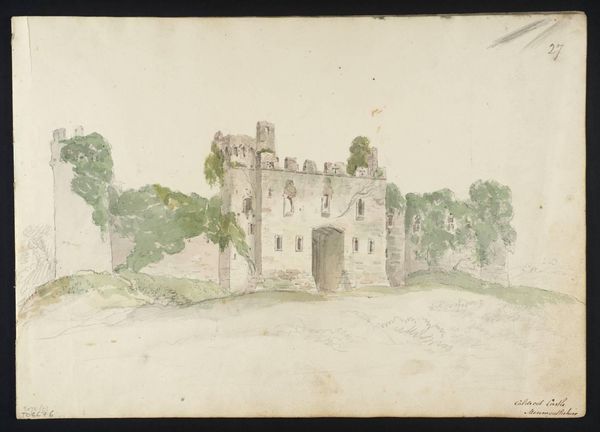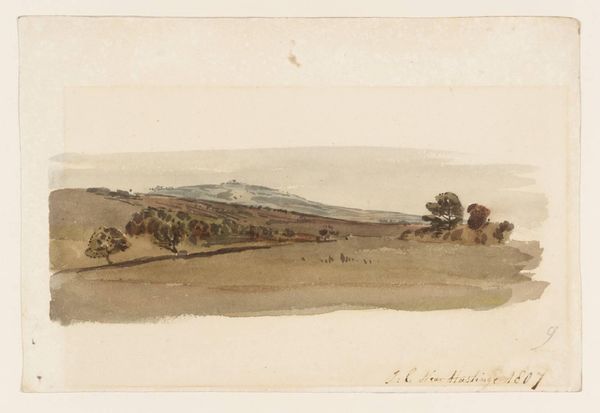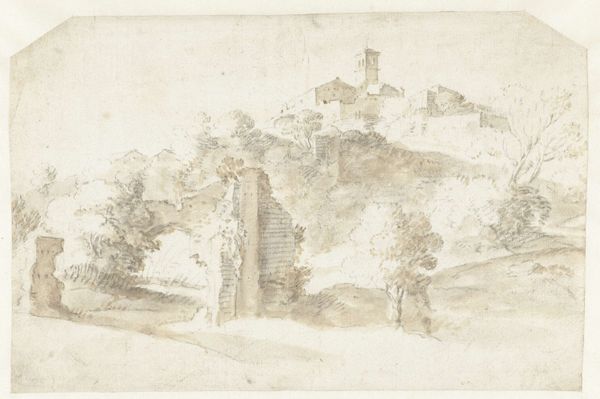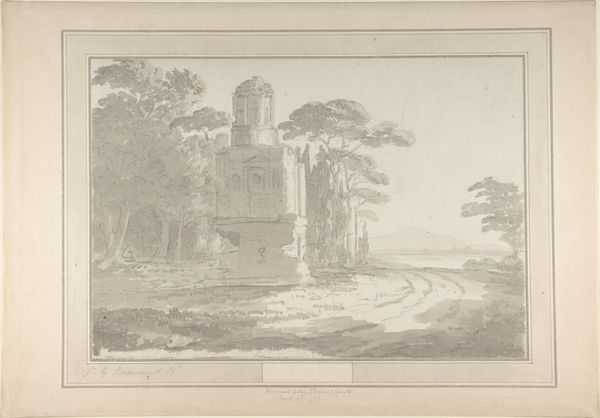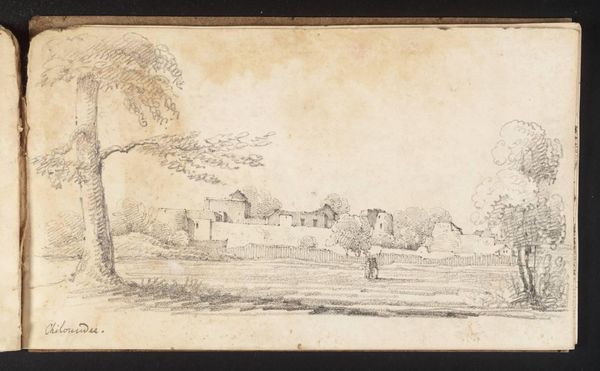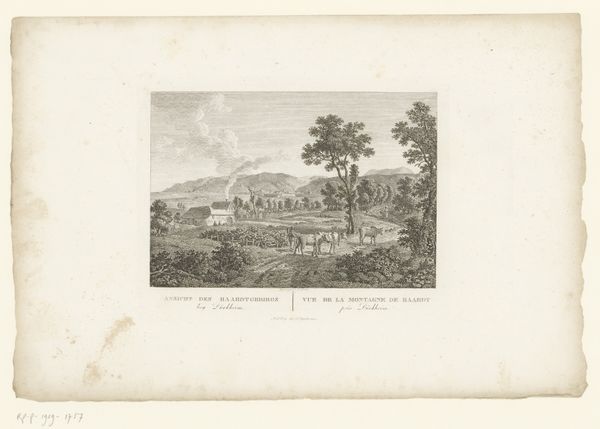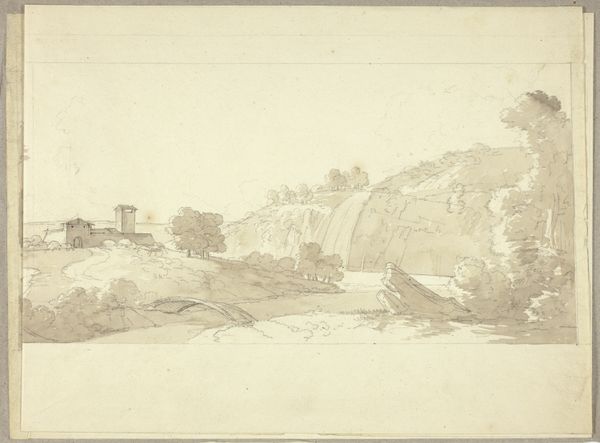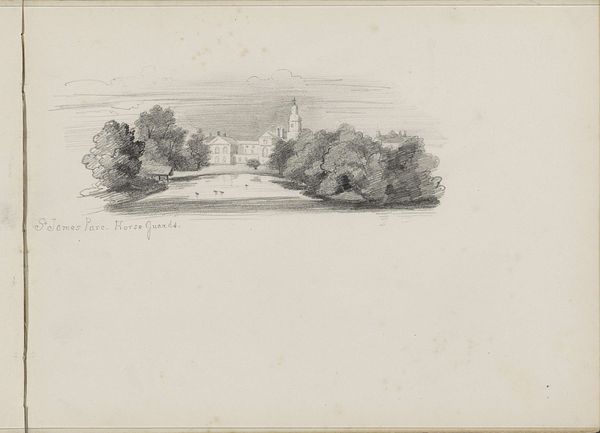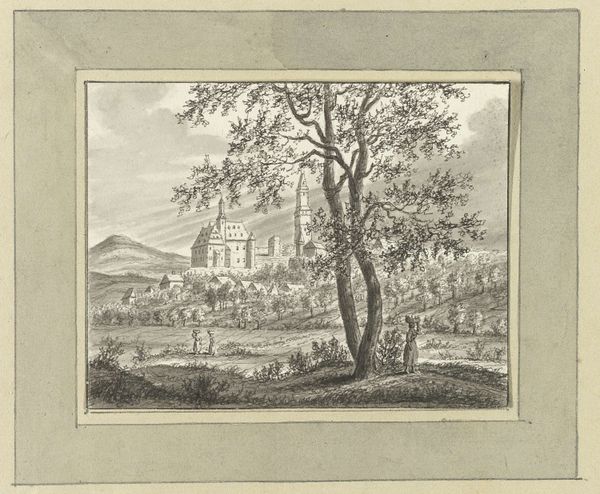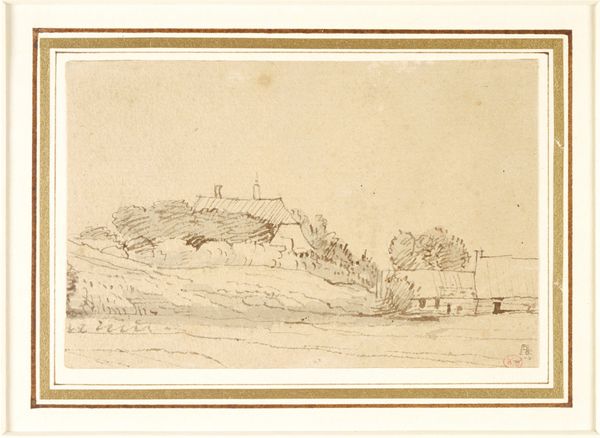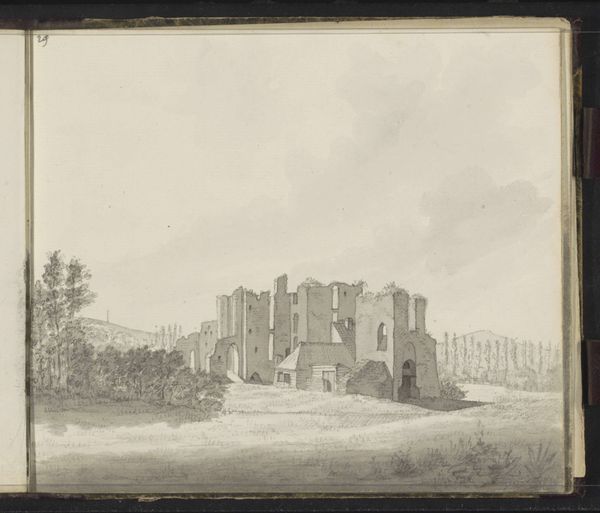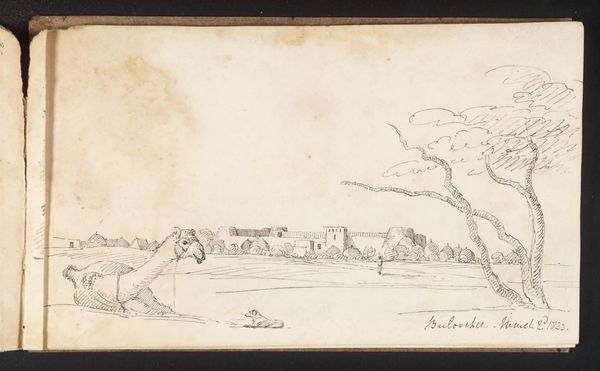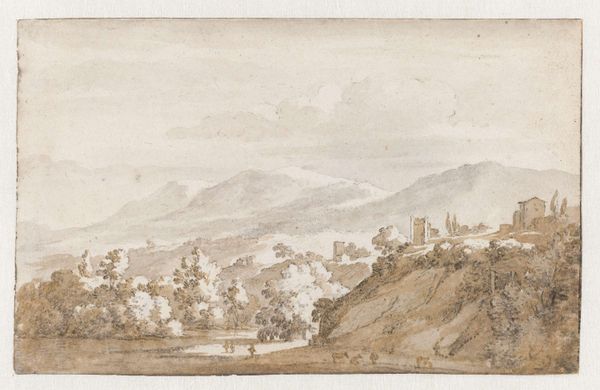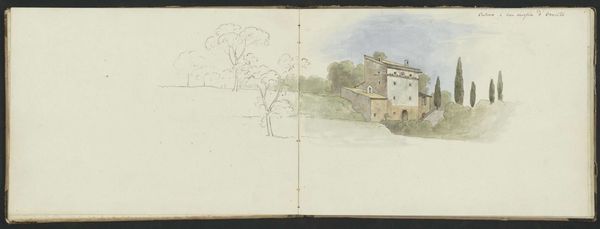![[title not known] by Joseph Farington](/_next/image?url=https%3A%2F%2Fd2w8kbdekdi1gv.cloudfront.net%2FeyJidWNrZXQiOiAiYXJ0ZXJhLWltYWdlcy1idWNrZXQiLCAia2V5IjogImFydHdvcmtzL2MyYTlmYjYyLWE2MTQtNGY1NC04YzZkLTJiZGE3NWQxYjJiZS9jMmE5ZmI2Mi1hNjE0LTRmNTQtOGM2ZC0yYmRhNzVkMWIyYmVfZnVsbC5qcGciLCAiZWRpdHMiOiB7InJlc2l6ZSI6IHsid2lkdGgiOiAxOTIwLCAiaGVpZ2h0IjogMTkyMCwgImZpdCI6ICJpbnNpZGUifX19&w=3840&q=75)
Dimensions: support: 279 x 381 mm
Copyright: CC-BY-NC-ND 4.0 DEED, Photo: Tate
Curator: This watercolor sketch is by Joseph Farington, dating back to the late 18th or early 19th century and part of the Tate Collections. Editor: The soft palette really sets a tranquil, almost melancholic mood. The composition, with that structure nestled in the landscape, is quite compelling. Curator: Farington was a prolific topographical artist. It's likely he aimed to capture the historical and social significance of the site, perhaps a ruined castle. Editor: Note how the pale washes define form. The muted tones, the layering effect – it's all about the interplay of light and the building's texture. Curator: Precisely. During this time, depicting ruins allowed artists to reflect upon themes of decline and the passage of time. This resonates with contemporary social anxieties. Editor: I see it more as a study in geometric forms, with the cylindrical towers set against the organic lines of the foliage. It's all quite balanced. Curator: Ultimately, this work reminds us that art serves as both a mirror reflecting societal concerns and a lens through which we can examine the enduring power of aesthetic form. Editor: Indeed, it's a very delicate balance between objective representation and subjective interpretation, both in the artwork and in our understanding of it.
